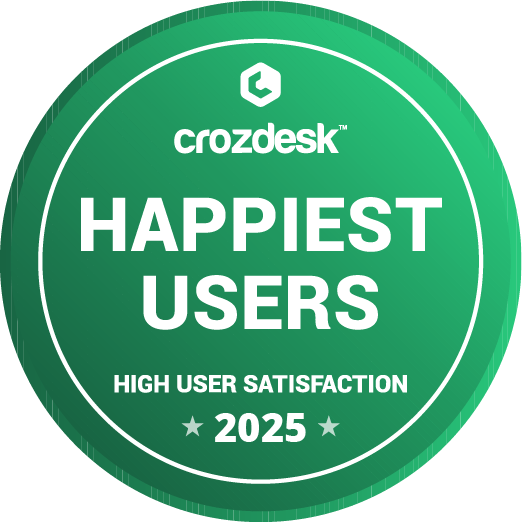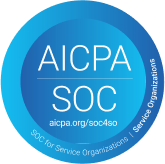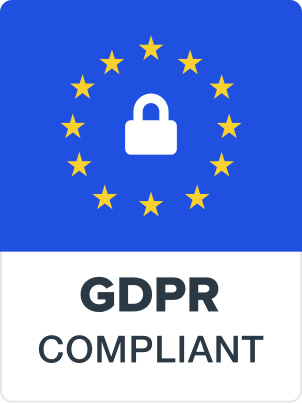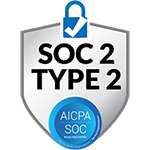As an experienced event organizer, I know that organizing events can be both exciting and challenging. From connecting with the audience to collaborating with interesting people, there's a lot to enjoy. But at the end of the day, what really matters is the results. And that's where the event analysis report comes in. In this guide, I will walk you through the process of writing a high-impact post-event report that effectively communicates the success and performance of your event.
What Is An Event Report?
It is also known as a post-event report or post event analysis, is a document that gathers all the essential data and metrics that illustrate the performance and success of your event. It serves as the official follow-up with stakeholders, including company executives, partners, speakers, and sponsors. It not only showcases the achievement of goals and objectives but also helps stakeholders calculate their return on investment (ROI).
.jpg)
What Kind Of Data Do Event Reports Cover?
This report typically cover a wide range of data and insights, including:

A good event report should be actionable. It should provide recommendations for improvement and suggestions for future events. - [IMEX Group]
Now that we understand the importance of this report, I will give you the reasons why you should create one.
3 Reasons to Create An Event Report Summary

Types of Post-Event Reports
Before we start talking about the types of post-event reports, let's understand why these reports are important. Post-event reports are like summaries that help us figure out how well an event went, what problems came up, and how the event affected things like attendance and finances. These reports look back at the event and help us see what worked and what didn't, so we can do better in the future. Now, let's look at the different kinds of post-event reports that are crucial for planning and managing events.
Attendee Statistics Report
An Attendee Statistics report offers a concise overview of crucial data related to event participants. It includes key metrics such as the total number of attendees, demographics, and any notable trends in participation. This report provides organizers with essential insights into the scope and makeup of their audience. By analyzing attendee statistics, organizers can tailor future events to better suit the preferences and expectations of their target audience, enhancing the overall success and relevance of upcoming gatherings.
Financial Summary Report
A Financial Summary Report is a concise overview of the monetary aspects of an event. It includes details on the budget, expenditures, and income, offering insights into the event's financial performance. This report helps organizers assess the event's profitability, identify areas for cost optimization, and make informed financial decisions for future events. By summarizing the financial data, the report serves as a valuable tool for ensuring fiscal responsibility and planning successful, financially sustainable events in the future.
Social Media and Marketing Report
A social media and marketing report is a focused analysis of the promotional strategies employed for an event. This report delves into the effectiveness of marketing efforts across various platforms, measuring engagement, reach, and impact. It outlines the success of advertising campaigns, evaluates social media traction, and identifies the most effective promotional channels. By providing a snapshot of the event's online presence, the report aids in understanding the effectiveness of marketing strategies, allowing organizers to refine approaches for future events and maximize audience engagement.
Demographic Analysis Report
A demographic analysis is a concise examination of the characteristics and composition of the audience or participants in an event. This report focuses on key demographic factors such as age, gender, location, and other relevant traits. By understanding the demographics of the audience, event organizers can tailor future events to better meet the preferences and expectations of specific target groups. This analysis is instrumental in refining marketing strategies, enhancing participant engagement, and ensuring that events are well-suited to the needs of the intended audience.
Meeting & Chat Reports
A Meeting & Chat Report offers a succinct analysis of virtual or in-person meetings and chat interactions during an event. This report outlines the key discussions, decisions, and interactions that occurred. It provides insights into participant engagement, collaboration, and the effectiveness of communication platforms. By summarizing meeting outcomes and highlighting notable chat interactions, this report helps organizers understand the dynamics of participant engagement, facilitating improvements in future communication strategies and fostering more meaningful interactions during events.
Lead Capture Reports
A Lead Capture Report provides a brief overview of the data collected on potential leads and prospects during an event. It details information such as contact details, preferences, and interests gathered through various engagement channels like booths, surveys, or interactions. This report is essential for businesses and organizations looking to convert event attendees into potential clients or customers. By summarizing lead information, organizers can evaluate the success of lead generation strategies and tailor follow-up efforts for effective relationship building and business growth.
Detailed Report
A detailed event report is a comprehensive document that provides an in-depth analysis of various aspects of an event. It covers critical elements such as attendance, finances, participant feedback, logistical execution, marketing effectiveness, and sponsorship return on investment. By thoroughly examining these components, the detailed event report offers valuable insights into the event's overall success and areas for improvement. This comprehensive overview serves as a valuable resource for event planners and organizers, guiding future decision-making and enhancing the planning process for subsequent events.
Exhibitor Reports
An Exhibitor Report provides a succinct overview of an event from the perspective of participating exhibitors. It details exhibitor satisfaction, booth engagement, and the overall impact of their presence. This report is crucial for event organizers to gauge the success of the exhibitor experience and identify areas for improvement. By summarizing exhibitor feedback, it helps refine future strategies, enhance the value proposition for exhibitors, and ensure a mutually beneficial relationship between organizers and exhibitors in subsequent events.
Sponsorship ROI Report
A Sponsorship ROI (Return on Investment) Report is a brief analysis of the impact and effectiveness of sponsorships during an event. It outlines the visibility sponsors gained, the influence on their brand, and whether the agreed-upon benefits were delivered. This report is crucial for both event organizers and sponsors, providing a snapshot of the return sponsors received on their investment. By summarizing sponsorship outcomes, organizers can refine strategies to better meet sponsor expectations, fostering stronger partnerships for future events.
Feedback and Evaluation Report
A Feedback and Evaluation Report is a brief yet comprehensive analysis of participant opinions and assessments following an event. It consolidates feedback from attendees, sponsors, and stakeholders, providing valuable insights into the strengths and weaknesses of the event. This report includes participant surveys, testimonials, and suggestions for improvement. By summarizing this feedback, event organizers can understand what worked well and areas that need attention, facilitating informed decisions for enhancing future events and ensuring a more satisfying experience for all stakeholders.
How To Write An Event Report?
Step 1: Be sure to have a data tracking process in place
During the event, it's crucial to have a robust data tracking process in place. While you will be busy running the event, keeping track of what's happening behind the scenes and capturing "behind-the-scenes" photos can provide valuable material for your report. Consider using a virtual event platform that automatically collects data in the background, as it can be worth its weight in gold.
Step 2: Filter only the data that is required
Respect your readers' time by selecting the most important data for your report. Focus on providing information that matters to stakeholders upfront, and save additional details for the appendix if necessary.
Step 3: Write your report
To create a comprehensive report, you need to structure it in a way that effectively communicates the key details. Here are the essential sections to include in your report:
a) Executive Summary
Start your report with an executive summary that summarize the highlights and key data of the event on one page or less. Include information about objectives, KPIs, the level of achievement of these KPIs, budget summary, and key recommendations. It's best to create the executive summary last, as it provides an overview of the entire report.
b) Most Popular Content
List the most popular content from your event, including live sessions, on-demand sessions, and speakers. Rank the sessions based on the number of viewers, watch time, and engagement rate. Consider including the top five sessions in the report and providing the full list in the appendix.
c) Participant Demographics and Registration Data
Include attendee location, viewing time, registration data by country, company, and industry, as well as age and gender breakdown. This section will help stakeholders understand if the event successfully reached the target audience.
d) Media Exposure
Quantify the media exposure surrounding your event, including data from paid campaigns and organic posts. Include metrics such as impressions, click-through rates (CTR), and engagement rates to provide a comprehensive view of the event's reach.
e) Participant Engagement
Assess participant engagement through metrics such as engagement rate, reaction breakdown (likes, applause, and emojis), and the number of people who added specific sessions to their personal calendars. This section provides insights into the level of engagement and interest generated by your event.
.jpg)
Step 4: Make use of visuals
Make your report visually appealing by incorporating graphs, infographics, tables, charts, and photos. Visual representations of data make it easier for readers to understand and interpret the information.
Step 5: Check your report for errors
Ensure that your report is error-free by thoroughly proofreading it. Pay attention to spelling, grammar, and punctuation to maintain a professional and polished look.
Step 6: Provide the event summary to stakeholders
Once your report is complete, send it to all stakeholders involved in your virtual event. Take this opportunity to express your gratitude for their participation and involvement. Personalize the email by mentioning key results that are particularly relevant to each stakeholder and discuss potential next steps in your partnership.
How Eventify Can Help
To capture the relevant data needed for your report, it's important to have processes in place that track information throughout your event. One option is to use third-party data collection platforms, attendee forms, surveys, and social media analytics dashboards. However, an alternative option is to leverage a virtual event platform like Eventify.io.
Available on both web and mobile platforms, our virtual event planner helps you reach a global audience. On top of that, our analytics software gives you all the information about how well your event is performing.
A good event report includes both qualitative and quantitative data. This allows for a more complete picture of the event and its impact. - [PCMA]
How Event Reports Impact Your Event Planning Strategy
Event reports are vital for refining event planning strategies, offering a comprehensive overview of successes, challenges, and areas for improvement. Analyzing these reports influences decision-making, boosts efficiency, and promotes continuous improvement in future events. These reports, whether in written, presentation, or email form, document an event's success and are crucial for various reasons.
Firstly, they provide insights into the event's impact and effectiveness, guiding planning for future events. Secondly, they assess whether the event achieved its goals and showcase the gains obtained. Event reports cover everything from attendance numbers to financial outcomes and audience engagement, helping determine the event's success and informing decisions for subsequent ones.
Beyond numbers, event reports act as feedback mechanisms from attendees, aiding in making improvements for future events. They evaluate the effectiveness of advertising and promotional efforts, helping organizers understand what resonates best with their audience. Most importantly, these reports identify areas for improvement, enabling organizers to enhance future events based on attendee feedback and data.
Recognizing how crucial event reports are for shaping your event planning strategy is essential. Now, let's take a closer look at how these reports greatly impact the way you handle events
1. Checking How Well the Event Went
Event reports help you figure out how well your event did. By looking at important things like how many people came, how involved they were, and how much money you made, you can see what went well and what things might need to get better.
2. Figuring Out if the Event Was Worth It
Event reports help you see if the event made enough money compared to how much it cost. By looking at the expenses and the benefits, you can decide if the event was financially successful. This information is important for planning budgets and deciding where to spend resources in the future.
3. Understanding What People Like
After checking detailed event reports, you can learn about what people liked and how they acted during the event. Knowing what the audience enjoyed helps you plan future events that make them happy, making sure everyone has a good time.
4. Seeing If Your Ads Worked
You can figure out if your ads and promotions were good by looking at event reports. When you check things like how many people visited your website, opened your emails, and interacted on social media, you can find out which ways of telling people about your event worked the best. This helps you improve your strategies for reaching as many people as possible.
5. Making Smart Choices for the Next Event
Using information from event reports, you can make good decisions for the next event. Whether it's picking the best place, deciding when the event should happen, or making ads better, the things you learn help you plan wisely for the future.
6. Getting Better All the Time
Event reports act like a map for always getting better. When you listen to what people say and look at how things went, you can find ways to make things even better next time. This helps you improve how things are done and make each event more successful than the one before.
7. Sharing How Important Your Events Are:
Event reports show how much your events help the organization succeed. When you tell the top leaders or other important people about it, these reports prove that your events are valuable. This makes communication stronger and gets more support for future plans.
Final Thoughts
In conclusion, writing a report is a crucial step in evaluating the success and performance of your virtual event. By following these tips and utilizing the right tools, you can create a comprehensive and impactful report that effectively communicates the value of your event to stakeholders.
Remember, this report is not only a reflection of your event's success but also an opportunity to foster future partnerships and identify areas for improvement.


.jpg)




.png)
.jpg)
.jpg)
.jpg)
.jpg)















